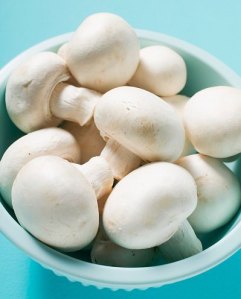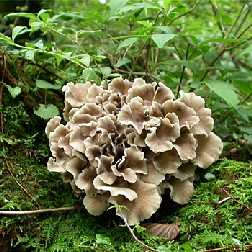Magic Shrooms
Agaricus Bisporus – A. bisporus for short.
Yes the Almighty-not-quite-a-meat- not-quite-a-vegetable-technically-the-fruit-of-a-fungus MUSHROOM!
First let me clarify, this post will be addressing the non-psychedelic shrooms. I do in fact have an upcoming post planned that discusses the possible remedial impact of psychedelic shrooms on personality disorders and depression. True story. Or was that a bad trip? We may never know.
For now, let’s get a handle on the more mainstream mush before we go to Wonderland.
OK mushrooms.
Interestingly, they are closer to animals than plants in that they do not employ photosynthesis – they actually breathe in oxygen and exhale carbon dioxide just like you and me!
While there are over 2,500 species of cultivated and wild mushrooms, I will be focusing on 10 of the most talked about.
All mushrooms have one thing in common – they are the single most concentrated form of Vitamin D that we have available to us in food form.
Vitamin D?
Why is that important?
Recently Vitamin D has been coming out of the proverbial woodwork as a supplement must-have.
Sidebar: If you have been on this site for any length of time, you will know that the official Miss Fit stance on supplements is “Whoop-de-doo, a capsule!” Folks, if you can eat the real thing, then please do. Like a Republican in Texas, nutrients work best when they are in their natural habitat.
Back to center.
First of all, to understand how important Vitamin D is, let’s shift our thinking a bit. Vitamin D is not a vitamin, per se… it is actually a hormone precursor directly related to sunlight. Now, sunlight, despite popular belief, does not actually contain Vitamin D. When UV rays from the sun hit your skin, a cholesterol-like chemical in your skin is converted to Vitamin D. The Vitamin D then travels to the liver where it is trans-versed in to the pre-hormone calcidol. The calcidol undergoes its own cellular changes and becomes calcitriol, the hormone that is responsible for attaching to 2,700+ sites on the human genome and essentially “turning them on”.
Wow. Pretty damn important if you ask me.
Or don’t ask me.
Ask Creighton University’s Robert Heaney, MD [people always feel more comforted when the opinion comes with those two special letters after the name]. His exact response was, “Vitamin D appears to be a key part of the biochemical machinery that open up the entire genome, so cells can tap into the vast information it contains and do the jobs they need to do at a cellular level”.
Oh, yes he also said, and I quote, “Vitamin D probably affects every disease”
So, yea, pretty damn important.
A few of the most prominent findings between Vitamin D and a healthier you are its ability to:
[1] Protect from influenza and rhinoviruses AKA the Flu and Common Cold
Evidently, numerous immune compounds depend on Vitamin D. Of particular note is the PCL-gamma1 molecule as it is responsible for activating immune cells into fight mode. Consider this molecule the sergeant of your little immune-soldiers and Vitamin D is the President phoning in the orders of battle. Without that call, the troops remain static.
Should I say “pretty damn important” again? I feel I’m getting redundant…
Let’s move along, then.
[2] Preserve bone mass and muscle fibers
Vitamin D is essential for normal bone formation because it acts as a catalyst for calcium absorption and utilization. Vitamin D is also needed for normal muscle production, resilience, and range of motion. Several studies have shown clear correlation between low Vitamin D levels and sarcopenia – the loss of muscle that comes from malnutrition and age-related osteoporosis. Remember, your muscles protect your bones. If you fall, it is your best bet to have the first line of internal defense [aka muscle] as strong as possible to protect your bones.
[3] Lower risk of certain cancers
Beginning in the 1980’s epidemiologists began finding correlations between low Vitamin D and colorectal cancers [i.e. cancers of the colon and rectum]
Side bar: try to work colorectal into a conversation this week. Please, please email me the outcomes at write.with.ms@gmail.com
Since the 1980’s we may have lost Aquanet, but we gained more correlations between Vitamin D deficiency and cancer – particularly cancers of the breasts, ovaries, kidneys, prostate, and pancreas.
A few other ailments that Vitamin D is showing strong correlation for are:
- Allergies
- Back Pain
- Fibromyalgia
- Heart Disease
- Seasonal Affective Disorder
- Schizophrenia
- Multiple Sclerosis
- Skin Cancer
- Type II Diabetes
- Vaginal Infections
SO how much Vitamin D do you need to protect yourself from all these plagues of human existence?
The answer to that can get tricky because everyone has slightly unique absorption rates based on a variety of factors [age, gender, other medications, tobacco use, basal metabolic rate, etc].
Your best bet is to ask your doctor for a blood test – and make certain that it is a 25-hydroxy vitamin D test – as other tests have been known to show false normal ranges with frightening frequency.
Doctors are not in total agreement of what the normal range even is, but most confer that optimal numbers are no less than 40 or 50 ng/ml.
Depending on the results of that test, you can gauge what sort of dietary and possible supplemental changes you need to make. You can also feel free to reach out to me, I would be happy to provide some guidance as well.
Most doctors recommend not taking more than 3000 IUs daily from supplements unless you are being monitored to avoid Vitamin D toxicity.
Just FYI, some indications of toxicity are poor appetite, nausea, vomiting, general weakness, and frequent urination.
If you believe you have toxicity, you most likely are trying to explain your way out of a bad hangover. Read those symptoms again and check Facebook pictures for confirmation.
Not that Vitamin D toxicity is completely unheard of, but general consensus in the medical community is that one would need to take daily doses of 40,000 + IUs for months on end.
I bet you thought I forgot all about the mushrooms, huh?
Nah, just trying to convince you that fungus is a worthwhile part of your diet.
SO, moving along then.
In addition to Vitamin D, mushrooms are a great source of B Vitamins [B12, B6, thiamin, niacin, folate, and riboflavin], Vitamin C, Calcium, Magnesium, Iron, Zinc, Potassium, Fiber, antioxidants, and trace minerals such as Manganese, Copper, and Selenium.
Just another reason eating the real deal is superior. All of those nutrients work with one another to keep you healthy and strong.
Here is a briefing on 10 common species:
- Native to grasslands of Europe and North America
- Firm and mild
- Youngest “sibling” of the portobello family
- “Middle child” ; “baby bellos”
- Found both wild and cultivated
- Deep, heart texture that fare much better than their White Button siblings in soups, stews, gravies, and stir-fries
- In addition to lots of vitamins and minerals, they also have conjugated linolenic acid, a phytonutrient thought to reduce the risk of estrogen-dependent breast cancer
- With heads of 4-6 inches on average, they are Full-grown cremini/button
- Meatiest of all – so much so they retain their form and flavor on a grille and in stuffings
- Native to Korea, China, and Japan where they are used for both medicinal and culinary callings
- Smoky, firm flesh hold up well in soups and stir-fries
- Fat-stemmed with a nutty flavor
- Typically found dried in Americas but heralded in all forms in Italian cuisine
- Versatile to be used in sauces, risottos, and marinades
- Easy to grow
- Anise-like scent
- Delicate in appearance and used to adorn meat at many a steakhouse
- Soft and Ruffled in appearance but crisp in texture and woodsy in taste
- Used in pasta and salad dishes
- Favored in Eastern medicine as an immune booster
- Honey-combed
- Wild, elusive; grow well after freshly burned forests [do not take matters into your own hands, Smoky the Bear is watching]
- Herbed butter sauté brings out its natural earthy flavors
- Often paired with oyster mushrooms and pinot noir wine. yes please.
- Trumpet-shaped
- Wild growing
- Fruity/peppery taste
- Work well in saute
- Darker cousin of the Chanterelle
- Grown only in the wild
- Smoky and fruity aroma
One final note, Vitamin D is a fat soluble vitamin – – drizzling them with truffle or olive oil not only helps the taste buds and satiety factor, it actually will assist in the absorption of the nutrients they have to offer.












Well, I’m definitely craving mushrooms now.
LikeLike
Right? ?? As always thanks for stopping by I always look forward to your comments 🙂
LikeLiked by 1 person
Great post. I love mushrooms and have been searching the internet for ample information on vitamin D for quite some time. Thanks for a very informative post dear Miss Fit!
LikeLiked by 1 person
Most definitely. And dont forget, I do articles by request – don’t hesitate to reach out if you are ever in the search for something again!
LikeLike
I love your posts, they are so motivating and this one is no exception. You can guess what I’ve just put on my shopping list! I had no ideas mushrooms had so much to offer and thankfully they taste nice (as honestly speaking, not all superfoods do… looking at you broccoli !)
LikeLiked by 1 person
So glad you stopped by! Let me know what you make !
LikeLike